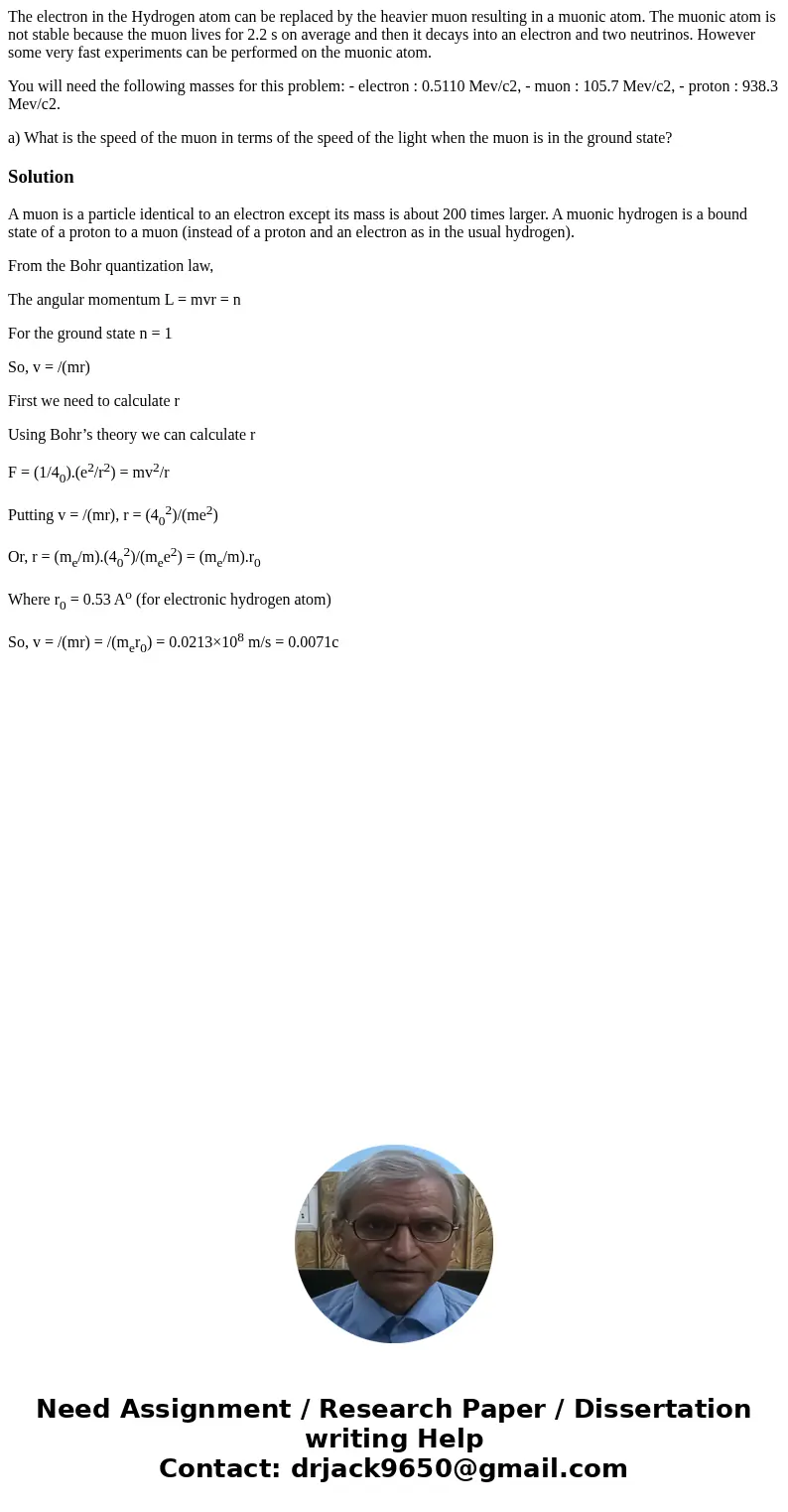The electron in the Hydrogen atom can be replaced by the hea
The electron in the Hydrogen atom can be replaced by the heavier muon resulting in a muonic atom. The muonic atom is not stable because the muon lives for 2.2 s on average and then it decays into an electron and two neutrinos. However some very fast experiments can be performed on the muonic atom.
You will need the following masses for this problem: - electron : 0.5110 Mev/c2, - muon : 105.7 Mev/c2, - proton : 938.3 Mev/c2.
a) What is the speed of the muon in terms of the speed of the light when the muon is in the ground state?
Solution
A muon is a particle identical to an electron except its mass is about 200 times larger. A muonic hydrogen is a bound state of a proton to a muon (instead of a proton and an electron as in the usual hydrogen).
From the Bohr quantization law,
The angular momentum L = mvr = n
For the ground state n = 1
So, v = /(mr)
First we need to calculate r
Using Bohr’s theory we can calculate r
F = (1/40).(e2/r2) = mv2/r
Putting v = /(mr), r = (402)/(me2)
Or, r = (me/m).(402)/(mee2) = (me/m).r0
Where r0 = 0.53 Ao (for electronic hydrogen atom)
So, v = /(mr) = /(mer0) = 0.0213×108 m/s = 0.0071c

 Homework Sourse
Homework Sourse